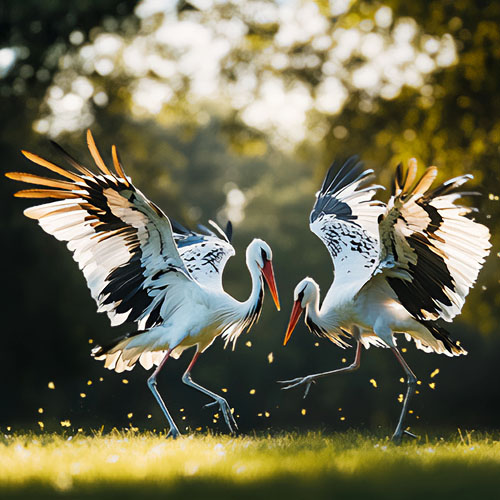Maybe it’s a category-five hurricane or an earthquake Maybe a new virus kills humans faster than any disease since the plague. Or the next banking crisis takes us from advanced capitalism to chaos in the blink of an eye. Or, maybe the terrorists finally explode that dirty bomb.
Survive the End of the World
Here’s what you can do when the only thing you can realty count on is uncertainty.
ALWAYS BE PREPARED
Max out your skills right now. All of them. If someone wants to teach you to fly a plane, say yes, because you never know. If your local fire department offers a first-aid class, take it. And if there’s a cooking show on how to make beef jerky or start a vegetable garden, watch it. Get the idea?
“Being a true badass is about being independent from the system,” says Neil Strauss, author of Emergency: This Book Will Save Your Life. “The more you learn and the better prepared you are, the less afraid you’ll be.”
If you’ve planned ahead at all (and you should), you’ve filled a handy backpack with some survival essentials: a fixed-blade knife, medicine, nonperishable foods like canned tuna and peanut butter, a map, and iodine tablets for purifying water. Survivalists call them “G.O.O.D.” bags, as in Get Out of Dodge, or simply “Bug Out Bags.” And anyone who’s ever thought seriously about surviving the end of the world has spent hours packing and repacking this doomsday backpack, making sure it’s both lightweight and jammed full of the kind of stuff they’ll need when all hell breaks loose.
FIND A WATER SUPPLY
You won’t last more than three days without water. But if you haven’t stockpiled a serious supply in advance, you’re not screwed, says Dr. Maurice A. Ramirez, an emergency-medicine specialist and founder of High Alert International, a medical consulting firm that responds to major disasters, such as the recent earthquake in Haiti.
“Most people are caught unaware by disaster,” Ramirez explains. “In those cases, the problem isn’t finding water; it’s making water clean.”
Ramirez says that filters, boiling, and iodine tablets (assuming you aren’t allergic) all work well when it’s time to purify water, but the easiest solution can be found in just about any home. “Put a teaspoon of Clorox in a gallon of water and let it sit for about 15 minutes,” Ramirez says. “It’ll taste like pool water, but you can live on it forever.”
MAKE FIRE
If you’ve had some primitive-skills training, you know you can build a fire by rubbing two pieces of wood together. The trouble is, you need to be a real outdoorsman to master this method. More likely, you’ve thought ahead and packed a lighter or a magnesium stick in your G.O.O.D. bag. But if you don’t have those items, it’s possible to make a fire with two common household items: steel wool and a nine-volt battery.
Rudy Reyes, a former recon marine who, after combat tours in Afghanistan and Iraq, appeared as himself in HBO’s Generation Kill and as the host of Apocalypse Man, a History Channel show about disaster survival, explains, “Fray the steel wool-that’s your tinder. Then scrape the charged end of the battery against the wool. It’ll start to spark. You can apply your burning tinder to kindling [little pieces of wood or cardboard], which can then be used to light larger pieces of wood.”
But starting a fire is only half the battle. “You need to keep it tactical,” Reyes warns.
That means keeping your fire small, because bad guys
can smell larger fires over a great distance. And it also means concealing your fire. For that, Reyes suggests finding such debris as cinder blocks, bricks, or even building a dirt mound around the sides of the fire to hide the flames.
GET SHELTERED
Where you sleep after a disaster will depend most on the nature of the catastrophic event. Provided there hasn’t been an earthquake, any structurally sound building will do. But before you set up camp, you’ll want to make sure you’re the only one in the building.
“Never assume security,” says Reyes, who adds that you should map out an escape route in case someone else comes knocking. But, if you’re forced to sleep outside, you’ll need a shelter to keep safe from the elements-especially wind, cold, and rain. “A tarp is a great way to start a shelter,” Reyes says.
“Use sticks and stones to shape and secure an A-frame tent or a lean-to out of your tarp. Then gather as much grass, leaves, dirt, and pine needles as you can to insulate your shelter. That will keep you warm.”
TAPE IT UP
Duct tape has a million uses, but one commonly overlooked use is in first aid.
“You can patch anything with duct tape, including a hole in your body,” Ramirez explains. “It may not be perfectly sterile, but it’ll stop the bleeding, and survival health care is about incremental goals.”
A piece of clean cloth with duct tape on either end makes for a pretty solid Band-Aid, whereas strips of duct tape cut into quarter-inch pieces can substitute nicely for stitches. For larger wounds, duct tape can be used to hold the skin together, which will give the blood valuable time to start clotting. If the issue is a broken bone or sprain, duct tape and a few long, hard sticks can make a good splint, and if you need to put your arm in a sling,
a long loop of duct tape around your neck (double-sided so it doesn’t stick to your skin) and another that runs that length of your arm will immobilize the limb until you reach help.
GET FUELED
Foraging for food is vital for survival. Assuming you’re in an urban area, Ramirez says you’ll want to stick with packaged foods. Check to make sure the package is still viable by squeezing it. If air comes out, the food has been compromised. And, Ramirez advises, unless you’ve got a food allergy, a disaster is no time to be a picky eater.
But as a disaster wears on, and even urban supplies run low, food gathering is going to become more basic, says Scott Williams, author of Bug Out: The Complete Plan for Escaping a Catastrophic Disaster Before It’s Too Late. “Know the basics about plants in your area,” Williams says. “Stay clear of mushrooms — they’re too risky. And know that plants with a milky sap are probably poisonous.”
To play it safe, Williams suggests looking to the inner bark of a tree, which can be roasted over a fire. Likewise, needles from evergreen trees can be boiled to make a tea that’s rich in vitamin C. And if you’ve found cattails (also known as Typha), you’ve scored, because at least one part of the plant is always edible, depending on the season. Choice parts include the root stalk (late autumn through early spring), the base of the leaves (spring), and the flower (summer).
Long-term, you’re going to need protein, and getting your fill won’t be as simple as hitting up your butcher. The first rule to being a successful hunter, says Reyes, is thinking like an animal. “All animals need water, so that’s where you want to look,” Reyes advises.
If you’re a good shot and you’ve got ammo to spare, you can go after bigger game. But just about anyone can take out a smaller animal, like a rat or a squirrel, with a rock and a stick by setting
up a deadfall trap. “You suspend the rock with a stick and corral the animal under the rock,” Reyes says. “When the stone falls, the animal is done, but you might have to finish him off with a club.”
From there, it’s just a matter of skinning and cleaning the animal before cooking it. But Reyes cautions that you should check the animal’s eyes; if they’re cloudy it could indicate disease.
GRAB YOUR GUN
Regardless of your personal political views about guns, when the shit gets real, you’re going to want a rifle.
“Rifles are better than handguns because you can hunt and protect yourself, so it has a dual purpose,” Reyes says, adding that he prefers a 5.56mm rifle for two reasons. First, the bullet is widely used by NATO, so you’ve got a good chance of finding the right ammo. Second, the 5.56mm is a lightweight, high-velocity round, which means it’s highly effective without a lot of recoil — “perfect for any shooter,” Reyes adds.
Of course, having the right rifle won’t do you much good
if you don’t know how to use it. Reyes recommends that you take a course at a local firing range, where you’ll learn basic marksmanship, weapon safety, and how to clean your rifle. But after you’ve learned the basics, the real challenge begins.
“You have to practice,” Reyes says. “Shooting is a perishable skill, and under stress you will perform only to your last level of training.” But that doesn’t mean you have to hit the range all the time. In fact, you don’t need to fire a single shot to stay sharp, according to Reyes.
To practice at home, draw a target smaller than a man on a wall (the smaller the target, the tougher the drill). What you’re practicing is “presentation,” and the idea is to “marry” your sight, which should be in sharp focus, with the blurry target off in the distance. Regularly training your eye to put your sight on-target will help you keep your shooting skills sharp.
BREAK LOOSE
Imagine the aftermath of a disaster. You’re scavenging for food and all of a sudden a force of armed men (possibly soldiers or police) detain you. Forget about asking what the charge is or to speak with your lawyer. It ain’t gonna happen. What you need to do is escape. Fast.
That’s why Emergency author Strauss says he learned how to escape from the flex cuffs and tie wraps that are often used in lieu of metal shackles during widespread disasters.
“It’s actually pretty easy,” Strauss says. “But it helps if you’re wearing shoelaces made of paracord [a super strong nylon rope used by U.S. Special Forces]. “
The idea is pretty simple. Use a lace to burn through the plastic tie. To do that, you need only remove one lace (easier if your hands are tied in front of your body), tie loops on each end of it, place the length of the lace across the flex cuff, and place your feet in each of the lace loops. By making a bicycle motion with your legs, you create friction, which will eventually disintegrate the flex cuff, allowing you to snap it apart.
NO KEYS, NO PROBLEM
There aren’t a lot of disaster scenarios in which a car doesn’t come into play. But if you don’t have access to a car, and you need wheels pronto, you’re going to have to make use of what’s handy.
Your first instinct might be to hot-wire a car. But there’s an easier way that could save you valuable minutes, and all you need are a screwdriver and a wrench. “Just put the screwdriver in the ignition and use the wrench to turn it,” Strauss says. “You’ll fuck up the car, but you’ll get it going.”
It’s a pretty foolproof method, but Strauss warns that you’re better off sticking to older models because the more electronics in the car, the harder it is to “borrow.”
And with lots of abandoned cars cluttering the road, you might think a motorcycle would be easier to get around on. Forget it, Easy Rider. “It’s not hard for someone to knock you off a bike, and then you’re screwed,” Strauss says.
WHERE ARE YOU GOING?
If you’re dealing with a large disaster area, you’re going to be in for quite a trek, and it’s important to know where you’re going and — if possible — what’s ahead.
“The key is the high ground,” Reyes says. “Get somewhere that’s elevated-you’ll be able to plot a way out, and you’ll be safer because it’s easier to see if someone is coming.”
Of course, if you happen to have a map and a compass, you’re way ahead of the game. With those tools in hand, Reyes suggests orienting the map, which is an almost foolproof method of navigation. To get on-course, simply lay the compass along the north/south lines of the map and turn the map until it lines up with the terrain. From there, you should be able to navigate using major landmarks like rivers and tall buildings (assuming they’re still standing).
WHICH LAND IS YOUR LAND?
There are some basic no-brainers that everyone should be aware of when it comes to surviving a disaster. Have cash on hand. Have duplicates of important documents like passports and birth certificates. And have a couple of phone numbers memorized. But, according to Strauss, one thing you might consider is looking into dual citizenship.
“Depending on the disaster, it’s possible that some countries will be better off than others, and you’ll want to have citizenship lined up elsewhere in case you need it.”
If you’ve got parents or grandparents from other countries, there’s a good chance you qualify for dual citizenship, Strauss explains. You should research this immediately. But even if
your U.S. heritage runs deep, there are countries that will take you in if you buy land there. Which is exactly what Strauss did in St. Kitts.
TEAMING UP
Unless you’re a military commando, you probably won’t get very far on your own. But teaming up with other survivors after a disaster can be a dicey proposition. “You’ve got to look at everyone as a potential threat,” Reyes says. “If you come across other people, there could be an opportunity there. But you have to operate from a position of strength.”
According to Reyes, that means leaving nothing to chance when you set up a meeting. “Observe them to gather intelligence and establish their routines,” he advises. “After that, sneak into their camp and leave a note directing them to meet you at a specific time and place of your choosing. But get to the meeting place first, and make sure that you have an escape plan if you don’t like what you see.”
DOWN,BOY!
Sex should be the last thing on your mind in a disaster, but if you get the urge or the opportunity, Ramirez offers this advice: “Don’t do it. You don’t know who’s about to get sick, and sex, or even kissing, will spread diseases that can be fatal in a disaster.”
So if by some chance you’ve managed to save a total hottie, wait until you’ve made it to safety to get it on.
MORALE BOOST
It probably will be the last thing on your mind when the world goes to hell, but if you can remember to grab some laminated photos of loved ones, you’ll be a lot better off, says Reyes.
“It may not sound like much, but pictures of the people you love can help you keep your sanity, and that will help you make good decisions and save your life.”

























